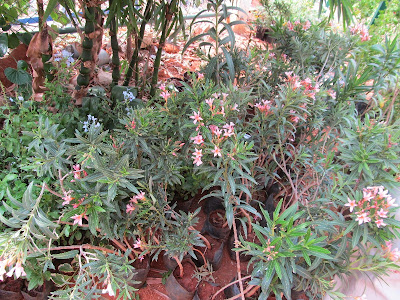As part of phase 2 of shrub planting, we have got 379 saplings from Lal Bagh. These are butterfly attracting plants such as Hamelia patens, powder puff, ixora, cup & saucer, nerium oleander, plumbago, lantana, etc. Pics below.
Please volunteer to plant them tomorrow 1st June, morning from 7 a.m.
Pits have been dug within the inner grill for these shrubs which will be maintained to a height of about 3 feet in order to deter trespassers from entering the water.
Please volunteer to plant them tomorrow 1st June, morning from 7 a.m.
Pits have been dug within the inner grill for these shrubs which will be maintained to a height of about 3 feet in order to deter trespassers from entering the water.
Last Saturday our volunteers had planted 70 saplings of Vitex negondu along the Brigade Millennium - Arekere road fence.
The next round of planting may happen, if at all, only in Aug. Don't miss this opportunity to plant these beautiful flowering shrubs in 14 varieties. Come back and revel in the sight of butterflies flocking to the shrubs you had planted!
The next round of planting may happen, if at all, only in Aug. Don't miss this opportunity to plant these beautiful flowering shrubs in 14 varieties. Come back and revel in the sight of butterflies flocking to the shrubs you had planted!


















